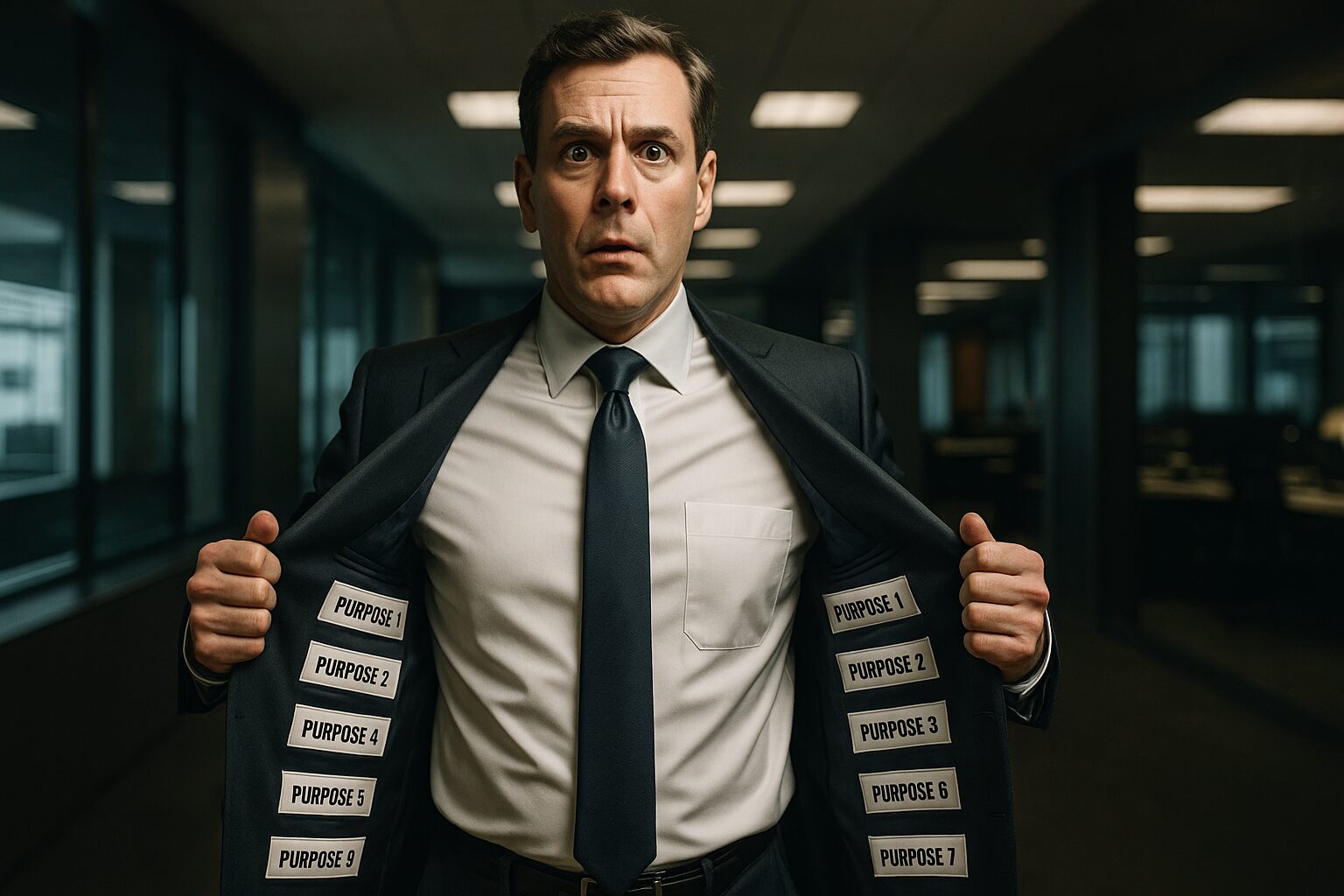The paradox of “brand purpose”, and please forgive the scare quotes but they’re unavoidable, given how the phrase has been dismembered by consultants, ad agencies, and well-meaning middle managers into something closer to “a mood we want people to associate with us” than an actual, guiding raison d’être ,is that it was always meant to be the thing you say when it matters most. The line in the sand. The moment when your company proves it’s not just a machine for turning shareholder anxiety into quarterly dividends but some kind of moral actor in the sprawling, chaotic soap opera we call society.
Except, and this is where things get messy (and by messy I mean soul-crushingly, meme-ifyingly messy), the second an actual crisis hits, the instinct of almost every boardroom on the planet is not to speak that lofty purpose into being, but to smother it under a blanket of strategic silence. Which sounds prudent. Rational. Mature even. Until you realize that silence, in 2025, is the opposite of neutral. Silence is radioactive.
You can almost script the boardroom scene: a brand manager clears her throat, someone from legal shifts in his chair, the CEO stares at the floor with that expression that says “please don’t make me take a stance that could lose us Wisconsin.” The proposal is always the same: say nothing, ride it out, the internet forgets fast. Except the internet doesn’t forget. The internet screenshots, re-uploads, stitches, remixes, and then (and this is the new horror) feeds the silence into AI engines that generate whole new conspiracy theories about what your silence means.
Bud Light learned this the hard way. The beer brand mailed a single can with a rainbow design to Dylan Mulvaney, a trans influencer. Cue outrage from conservative America. The company, instead of leaning on whatever purpose it pretended to stand for (inclusivity, fun, Americana reimagined), chose silence. Not a dignified silence. Not a philosophical silence. Just the dead air of a brand terrified to be anything at all. And that silence became louder than any commercial they had ever aired. Sales plummeted. The purpose wasn’t tested; it evaporated.
Disney under DeSantis: same script, bigger stage. The “Don’t Say Gay” bill passes, Disney initially keeps quiet, perhaps calculating that neutrality would protect them. But neutrality, in a polarized environment, is basically the same as picking a side (and often the wrong one). Employees revolted, activists revolted, then the company stammered out a stance too late. By then, the governor had scented weakness and launched a vendetta. The silence had already written the first act of the story, and it was a story about cowardice.
And then, closer to home, Italy, where brands still cling to the fantasy of the apolitical, “above it all” identity, like priests who imagine their robes will protect them from scandal. Barilla’s infamous moment, when its chairman dismissed same-sex families on radio. The silence afterward was more damning than the original comment. It broadcast a truth louder than any apology: our “purpose” (family, warmth, tradition) is selective. Dolce & Gabbana’s catastrophic China campaign: chopsticks, pizza, stereotypes, and then silence. That silence translated not as humility but as arrogance. Their so-called purpose (Italian creativity, global style) curdled into parody.
Here’s the deeper tragedy, and it’s one Wallace would appreciate: silence erodes coherence. And coherence, narrative integrity, the sense that episode after episode the characters in your corporate series are who they say they are, is the only thing purpose is really about. Consumers aren’t actually measuring if your supply chain is carbon-neutral or your CEO has read Judith Butler (though good luck if he tries). They’re measuring whether the story you tell about yourself remains consistent even when it’s hard. Silence interrupts the story. It’s like cutting to black in the middle of a season and then expecting audiences to still tune in next week. Spoiler: they won’t.
And yet (and this is why silence is so perversely seductive), there’s a case to be made, whispered in hallways, not published in Forbes, that in a world where every sentence is instantly meme-ified, silence at least buys you time. Time to regroup, time to test messaging, time to poll-test phrases so that your “purpose” doesn’t tank share price. Except the longer you wait, the more the silence metastasizes. It fills the vacuum with speculation. Employees assume you don’t care. Customers assume you’re complicit. Investors assume you’re weak. Silence is not absence; it’s negative presence.
Purpose that can’t withstand expression, purpose that only exists in the safe confines of the annual report or the brand manifesto video with soft piano music, isn’t purpose. It’s set design. It’s props. And audiences in 2025, binge-watching brands the way they binge Netflix, are incredibly good at spotting props. They don’t want placeholders. They want characters who act.
So, the tragicomic dilemma is this: speak, and risk being wrong. Stay silent and risk being nothing. And “nothing,” in a world where even algorithms expect you to perform an identity, is the most dangerous move of all.
Because (and let’s end on this, though we could spiral into infinite regress if we wanted) silence has its own sound. And that sound is often louder, uglier, and more permanent than whatever words you were so afraid to say.





